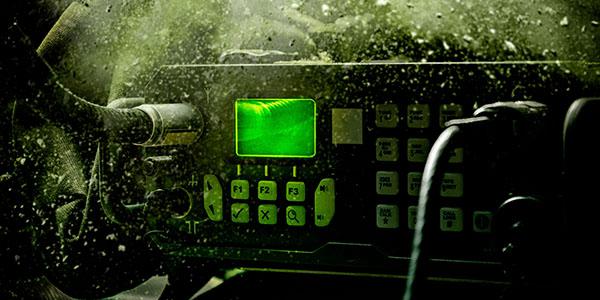Degrading Our Own Tech Is No Combat Option
The novel 2034 by James Stavridis and Elliot Ackerman perpetuates a fundamental misunderstanding of how technology should be employed and managed in future conflicts.
The continuing narrative is that we should purposely degrade our systems in a conflict with a peer competitor because of the possibility of a degraded spectrum, cyber attacks, space-based detection and jamming. But if we preemptively degrade our technology in a peer conflict, we will lose.
In the novel, after a conflict with the Chinese Navy in which the U.S. technical systems were incapacitated, U.S. ships preemptively disabled “any interface with a computer, a GPS or [any interface] that could conceivably be accessed online.”
Additionally, the captain in charge decided that “munitions would be deployed via manual weapons sights and manual releases. Navigation would be performed off charts, with flight times calculated using a wristwatch, pencil and calculator. Communications would be handled via a custom-installed suite of VHF, UHF and HF radios.”
There is a difference between selective use of systems to obfuscate signals—or decisions to create self-imposed limits on the use of technology out of operational necessity—and preemptive degradation of technology. In a conflict, an action/counter-action cycle will exist between us and a peer competitor during which we will attack each other’s technology at echelon resulting in temporary advantages. When faced with challenges to our technology, we must do whatever is necessary to find alternate pathways for connectivity while also identifying how an enemy effect was achieved to prevent that same exploit in the future.
By preemptively degrading our systems, we limit our ability to maneuver in the electromagnetic spectrum and cyber domain to counter enemy actions and achieve temporary advantages. There will even be times when we want the enemy to succeed in delivering an effect because it could give away their point of origin—the power signature of a jammer, for example.
The only scenario in which we should preemptively degrade our technology is if it is no longer a peer competition and we are outclassed in every aspect of technology against a superior competitor. If we are in a peer or near-peer conflict, we must make every effort to maintain the connectivity of our technology while training for scenarios when our technology is temporarily unavailable.
Knowing that we will operate in an environment where our technology may be degraded or neutralized, we must develop an approach to operating in the following environments: digital and fully connected, digital and locally connected, digital and not connected, and analog. In any environment other than digital and fully connected, we must make every effort to get back to a fully connected environment to either achieve parity or to gain a temporary advantage over our adversary.
A digital and fully connected environment is the desired state. In this environment, our local network, whether cellular, wireless or radio mesh, is connected to a broader network, which enables us to leverage the full capability of our technology. A digital but locally connected environment is a likely scenario in a future conflict in which access to a higher echelon, broader network, or positioning, navigation and timing may be cutoff.
A digital but locally connected environment is not optimal, but local connectivity still allows for some level of intra-unit communications even if external networks/units cannot be reached. Additionally, in this environment in which GPS may or not be degraded, units can still navigate based on a combination of inertial navigation and IoT triangulation within the local network.
Digital but not connected means that we still have access to devices, but they have been cut off from network access. In this environment, we can still leverage common operating pictures that have built-in maps and grids and other digital tools to prepare information for the eventual restoral, even if temporary, of networked capabilities.
Analog is the least desirable environment. An analog environment means a complete isolation from digital systems, to include power having been cut off. We must train to operate in an analog environment with the understanding that we will continue to do everything we can to restore networked systems to gain either parity or a temporary advantage over our enemy.
Preemptively degrading any of our technology in anticipation of enemy actions is a mistake. As peer competitors disrupt each other’s technology, the ability to have even a couple of minutes of connectivity while the other does not creates a temporary advantage that must be exploited. We must learn to operate in the full range of environments. Part of the training must be the necessity to restore connectivity as quickly as possible to negate any temporary advantage for the enemy. We must fight the narrative of preemptive degradation because any time we purposely degrade our systems, we give the enemy an advantage.
Maj. James Torrence, USA, is an active duty U.S. Army Signal Corps officer. He is a graduate of the United States Military Academy. He has a doctorate in strategic security and multiple graduate degrees including an M.S. in strategic design and management, an M.S. in cybersecurity, and a master of military art and science. He is the author of the book Strongpoint Cyber Deterrence. He has served in various military leadership positions in the United States, Afghanistan, Germany, Belgium and Korea. He currently serves as a United Nations staff officer in Jerusalem, Israel.





Comments